- Products
- Email Verifier Verify emails addresses individually, in bulk or through API, with 98%+ accuracy
- Email Finder Find individual or bulk emails by entering the person & company name or domain
-
Form Guard Protect your forms from spam, bots, and invalid submissions with real-time email, phone, and name verification.
- Prospect SQL/MQL list building with high levels of personalization, real-time data enrichment and prospect search
- Clearout For SheetsVerify email addresses directly on Google Sheets with Clearout for sheets add-on
- Prospect – LinkedIn Chrome ExtensionBuild verified, targeted prospect lists directly from LinkedIn profiles
- ClearoutPhoneValidate phone numbers across 240+ countries in bulk, quick or real time validation Free Tools
- Disposable Email Checker
- Reverse LinkedIn Profile Lookup Tool
- Reverse Email Lookup Tool
- Email List Cleaner
- ResourceDEVELOPER
API
Clearout APIs are structured around REST and JSONWebhooks
Capture real-time events in your application workflowForm Guard
Real-time form validation to keep bad contacts out of your CRMKNOWLEDGE BASEGetting started
Sending campaigns without bounces is made simpleFAQ
Easily find answers to services, security and common questionsUSE CASESLead Generation
Learn how professionals generate quality leadsGUIDESPricingTransparent & flexible pricing to support pay-per-use or recurringCompare Email Verification Tools
AI-powered email verification with 99%+ accuracy, real-time validation, and transparent risk scoringCompare Email Finder Tools
Pre-verified B2B email addresses with confidence scoring, find real person email, not role-based addressBLOGSEmail Verification ToolsFind Anyone’s Email Address
Most Accurate, Fast & Free WaysForm Validation
Importance, Ways & Best PracticesView All Blogs - Pricing
- Integrations
- Enterprise
- Login
High Email Spam Complaint Rate? Things You Should Know!

Ever wondered what triggers that dreaded “This is spam” button from your email recipients?
It’s a frustrating reality for many senders, but understanding why people mark emails as spam is the first step toward turning things around. The good news is that each reason behind these complaints can be tackled with actionable strategies.
In this blog, we’ll break down the key factors driving spam complaints and provide you with solutions on how to save your emails from getting flagged.
With a clear understanding of these triggers, you can take proactive steps to refine your email practices and significantly reduce the number of spam complaints you receive. Let’s dive in and upgrade your email strategy for better deliverability and engagement.
It’s a frustrating reality for many senders, but understanding why people mark emails as spam is the first step toward turning things around. The good news is that each reason behind these complaints can be tackled with actionable strategies.
In this blog, we’ll break down the key factors driving spam complaints and provide you with solutions on how to save your emails from getting flagged.
With a clear understanding of these triggers, you can take proactive steps to refine your email practices and significantly reduce the number of spam complaints you receive. Let’s dive in and upgrade your email strategy for better deliverability and engagement.
Table of Contents:
What is Spam Complaint?
A spam complaint happens when someone receives an email and marks it as spam or junk in their email program, like Gmail or Outlook. This tells the email provider that the person didn't want the email and considers it unwanted or annoying.
ISPs (Internet Service Providers) and email clients also use spam complaint rates to determine whether to deliver emails to the inbox or send them to the spam folder.
ISPs (Internet Service Providers) and email clients also use spam complaint rates to determine whether to deliver emails to the inbox or send them to the spam folder.
How Spam Complaint Rate is Measured?
The spam complaint rate is the percentage of emails you send that are marked as spam by recipients. It's calculated like this:
Spam Complaint Rate = ( ) × 100
Number of Spam Complaints
Total Emails Delivered
Example: If you send 1,000 emails and 10 people mark them as spam, your spam complaint rate is 1%.
What is a Bad Spam Complaint Rate?
A high spam complaint rate is when a lot of people mark your emails as spam. If this happens too often, it can make it harder for your emails to get delivered and might damage your reputation as a sender. Typically, a rate above 0.1% (1 complaint per 1,000 emails sent) is seen as high.
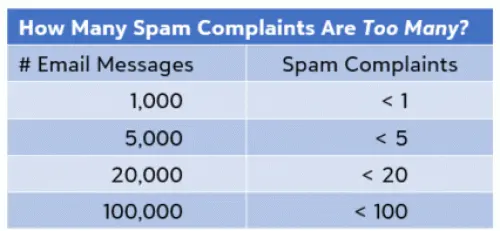
Email Spam Complaint Rate Thresholds by Major ESPs
Different ESPs have varying thresholds for spam complaints. Here's a breakdown of what major providers consider acceptable and bad spam complaint rates:
1. Gmail Acceptable Spam Rate: Less than 0.1%
Gmail is particularly strict with spam complaints. Exceeding this threshold can lead to your emails being marked as spam and harm deliverability. Gmail uses complex algorithms to determine the quality of the sender, and maintaining a low spam complaint rate is crucial for successful inbox placement.
2. Yahoo Mail Acceptable Spam Rate: Less than 0.1%
Yahoo is similar to Gmail in its handling of spam complaints. A high complaint rate can quickly lead to emails being sent directly to spam folders, impacting overall user engagement and deliverability.
3. Outlook/Hotmail Acceptable Spam Rate: Less than 0.1%
Outlook and Hotmail are known for their robust spam filters. They often employ additional measures such as throttling (slowing down email delivery) and temporary blocking if spam complaints rise above acceptable levels.
4. AOL Mail Acceptable Spam Rate: Less than 0.1%
AOL, like other major providers, expects a spam complaint rate below 0.1%. Exceeding this threshold can lead to deliverability issues and potential blocking of future emails.
Effects of High Spam Complaint Rate
Let’s have a look at some of the major effects of a high spam complaint rate on email senders and the overall campaign performance.
1. Reduced Email Deliverability
A high spam complaint rate can cause email service providers (ESPs) to view your emails as untrustworthy or unwanted, leading them to filter your messages into spam folders rather than inboxes.
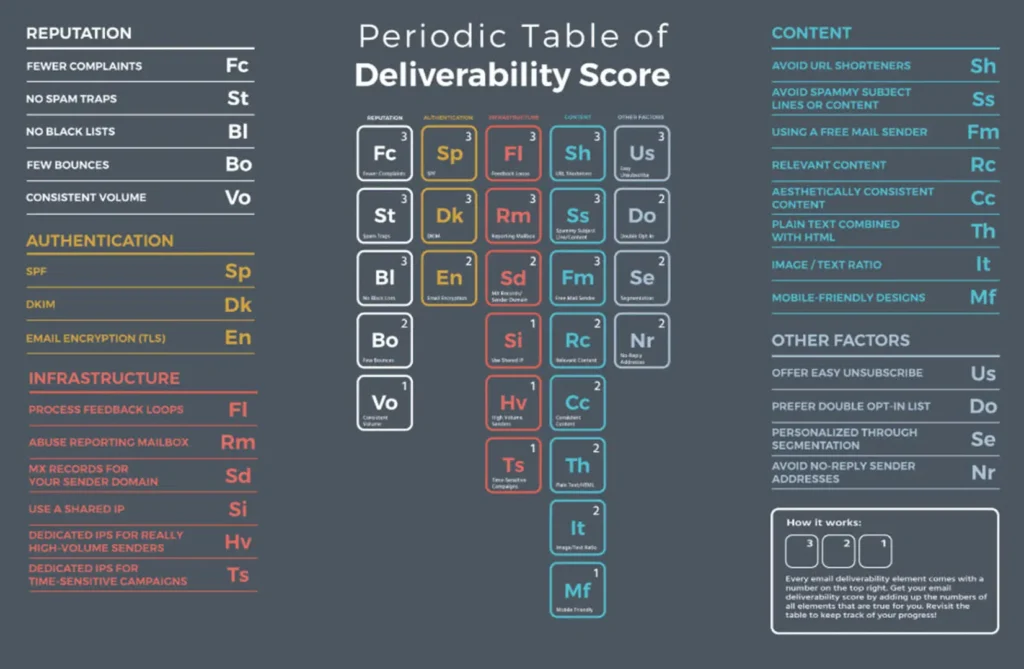
When too many people mark your emails as spam, ESPs interpret this as a sign that your emails may not be relevant or welcome to most recipients. This results in your messages being delivered to fewer inboxes.
2. Damage to Sender Reputation
Your sender reputation is a measure of how trustworthy your email-sending practices are, and it's a key factor in determining email deliverability.
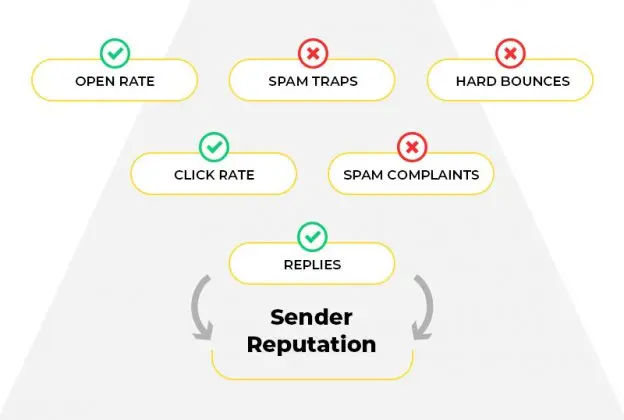
A high spam complaint rate can tarnish your sender reputation, making it more likely that more future emails will be flagged as spam or blocked entirely by ESPs.
3. Potential Blacklisting
Email blacklists are databases that track senders who are suspected of sending spam. Being on one of these lists can severely impact your ability to send emails.
If your spam complaint rate is too high, your email domain or IP address could be added to a blacklist, leading to widespread blocking of your emails by various ESPs.
If your spam complaint rate is too high, your email domain or IP address could be added to a blacklist, leading to widespread blocking of your emails by various ESPs.
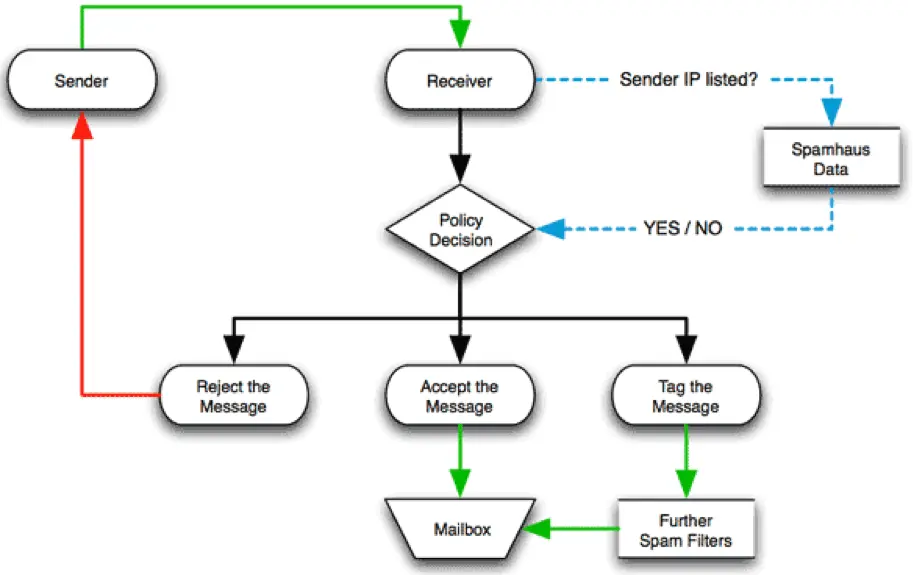
4. Legal and Compliance Issues
Many regions have laws and regulations that require consent for sending marketing emails, such as the CAN-SPAM Act in the U.S. and GDPR in the EU.
High spam complaint rates can indicate non-compliance with these regulations, potentially resulting in legal action or fines for failing to adhere to consent requirements.
High spam complaint rates can indicate non-compliance with these regulations, potentially resulting in legal action or fines for failing to adhere to consent requirements.

Why Are Your Emails Getting Marked as Spam?
Now let’s have a look at some of the common reasons why your emails might be getting marked as spam:
- Spammy-Looking Emails: Overuse of promotional phrases, all caps, and exclamation marks trigger spam filters.
- Poor Email Design: Emails lacking proper structure, containing broken links, or not optimized for mobile are flagged as spam.
- Violation of Spam Laws: Not including unsubscribe links, using deceptive subject lines, or missing physical addresses violates regulations like CAN-SPAM and GDPR.
- Forgetful Subscribers: Infrequent emails or irrelevant content can lead recipients to forget their subscriptions, causing them to mark your emails as spam.
- Unexpected Email Content: Emails with content that doesn’t match what recipients signed up for may be flagged as spam.
- Tricky Contact Collection: Using deceptive methods to collect email addresses can result in high complaint rates and spam flags.
- Poor Domain Reputation: A history of sending unsolicited emails from your domain can cause future emails to be flagged as spam.
- Bad IP Reputation: Emails sent from an IP address associated with spamming activities are likely to be marked as spam.
- Failed Email Authentication: Incomplete or incorrect setup of SPF, DKIM, and DMARC protocols can lead to emails being blocked or sent to spam.
How To Reduce Email Spam Complaint Rate?
Finally getting down to these 10 tips to reduce your email spam rate and improve your overall campaign performance.
1. Reach out to contacts who have explicitly opted-in
Make sure that the people on your email list have recently given their permission to be on it.
This helps keep your list up to date and makes sure you're sending emails to people who still want to receive them. By focusing on contacts who joined your list in the last year, you're more likely to have more people open your emails and fewer people mark them as spam.
You can also consider the double opt-in method just to be extra sure they're interested and did not subscribe by mistake.
This helps keep your list up to date and makes sure you're sending emails to people who still want to receive them. By focusing on contacts who joined your list in the last year, you're more likely to have more people open your emails and fewer people mark them as spam.
You can also consider the double opt-in method just to be extra sure they're interested and did not subscribe by mistake.
2. Do Not Use Shared or Trade Lists
It's best to avoid using email lists that you get from signing up for multiple things at once, buying them from other companies, or trading them with others.
Using these kinds of lists goes against the rules for how you're supposed to use email and the terms that come with using email services.
When you send emails to these lists, a lot of people might complain because they didn't want them or didn't say it was okay to send them emails, and that could make your emails look like spam.
Using these kinds of lists goes against the rules for how you're supposed to use email and the terms that come with using email services.
When you send emails to these lists, a lot of people might complain because they didn't want them or didn't say it was okay to send them emails, and that could make your emails look like spam.
3. Build a Quality Email List
Purchased email lists may seem like a quick way to grow your reach, but they often backfire. Instead, you should focus on creating valuable content and offers that naturally attract high-intent leads.
For example, gated content like eBooks or exclusive webinars can help you build a list of genuinely interested contacts who are more likely to engage with your emails.
For example, gated content like eBooks or exclusive webinars can help you build a list of genuinely interested contacts who are more likely to engage with your emails.

4. Regularly Clean Your Email List
Senders who regularly clean their lists have higher inbox placement rates compared to those who don’t.
Tools like Clearout can help identify inactive or invalid email addresses, allowing you to remove them before they result in bounces and harm your sender reputation.
You can also set up an automated email list hygiene routine to ensure the list quality is maintained. While list cleaning, don’t forget to remove the unengaged subscribers as well. This will save you from getting marked as spam due to poor engagement if they are no longer interested.
Tools like Clearout can help identify inactive or invalid email addresses, allowing you to remove them before they result in bounces and harm your sender reputation.
You can also set up an automated email list hygiene routine to ensure the list quality is maintained. While list cleaning, don’t forget to remove the unengaged subscribers as well. This will save you from getting marked as spam due to poor engagement if they are no longer interested.
5. Implement a One-Click Unsubscribe
Frustrating your subscribers with a complicated unsubscribe process is a sure way to increase spam complaints. According to a study, 50% of consumers say they’ve resorted to clicking the “Report Spam” button because they couldn’t easily find out how to unsubscribe.
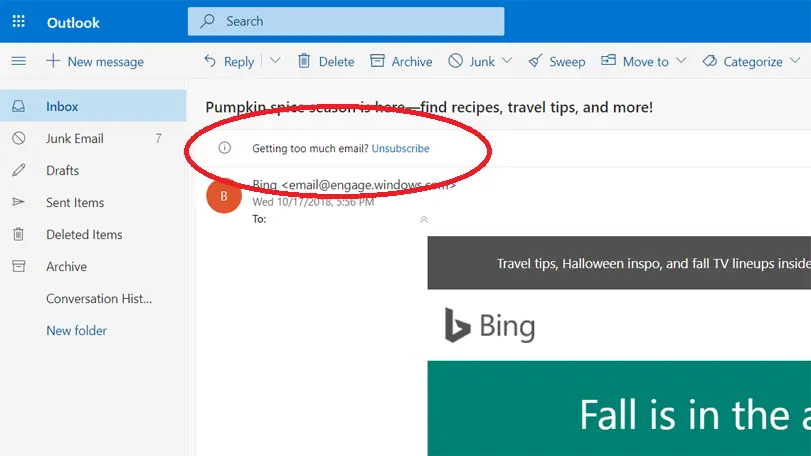
A simple, one-click unsubscribe link shows respect for your subscribers’ preferences and helps maintain a positive relationship, even if they no longer wish to receive your emails.
Clear, easy-to-find unsubscribe options can also improve trust and reduce the likelihood of being reported as spam.
Clear, easy-to-find unsubscribe options can also improve trust and reduce the likelihood of being reported as spam.
6. Use Consistent Branding and Domain
Consistency is key to building trust. Emails should come from the same domain where contacts signed up, and the branding should be identical to what they expect.

When sending emails, it's essential to maintain a consistent brand image by using a recognizable "From" name and domain. Mismatched branding or unfamiliar "From" names can lead to emails being mistaken for spam, resulting in a lower open rate and diminished credibility.
For example, if subscribers signed up on "example.com," make sure your emails come from "[email protected]" with matching branding. This helps build trust with recipients and avoids potential confusion.
For example, if subscribers signed up on "example.com," make sure your emails come from "[email protected]" with matching branding. This helps build trust with recipients and avoids potential confusion.
7. Optimize Your Email Sending Frequency
Finding the right balance when sending emails can help avoid annoying people or ending up in their spam folders.
Even though there's no perfect number, it's helpful to test how often people want to hear from you. For example, most people like getting 2-3 emails a month from a brand, but this can change depending on what industry you're in.
Even though there's no perfect number, it's helpful to test how often people want to hear from you. For example, most people like getting 2-3 emails a month from a brand, but this can change depending on what industry you're in.

Keep an eye on important numbers like how many people open your emails, click on the links, and unsubscribe so you can adjust how often you send them. Remember that sending too many emails can bother people and make them less interested in what you have to say.
8. No Spammy Email Content
One of the major considerations is to ensure people don’t mistake your legitimate emails as spam and flag them. Here are a few things to keep in check:
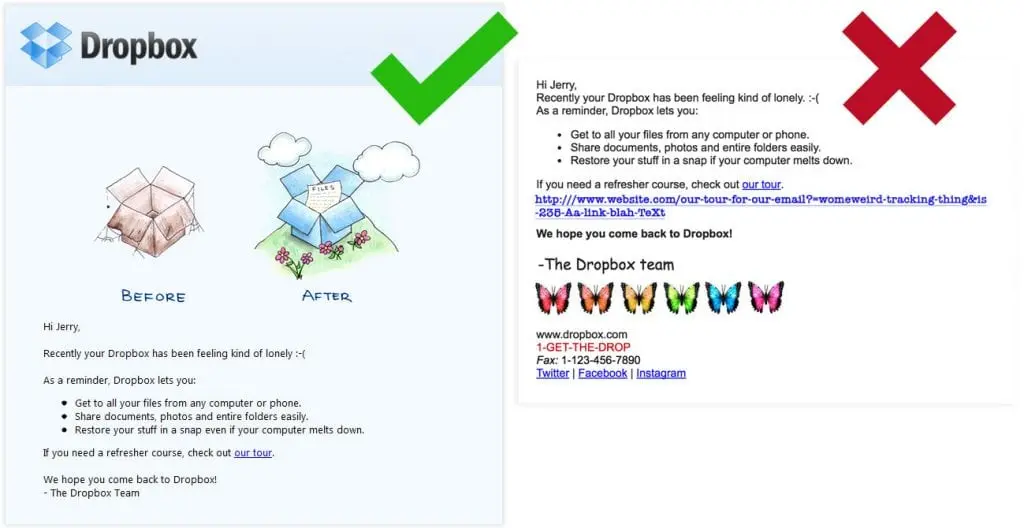
Avoid Spam Trigger Words: Steer clear of terms like “Free,” “Act Now,” and excessive use of exclamation marks. These phrases can trigger spam filters and lower deliverability.
Use a Professional Tone: Maintain a clear and professional tone in your emails. Avoid overly aggressive or sensational language that might appear misleading.
Limit Use of All Caps: Refrain from using all capital letters, as they can be interpreted as shouting and may be flagged by spam filters.
Balance Text and Images: Use a healthy ratio of text to images. Overloading with images or using only a single large image can trigger spam filters.
Ensure Clear and Relevant Subject Lines: Craft subject lines that accurately reflect the content of the email without using deceptive or clickbait tactics.
Include a Valid Physical Address: Always include a valid physical address in your email to comply with anti-spam laws and build trust.
Avoid Misleading Links: Make sure all links in your email are relevant and point to secure reputable sites. Avoid deceptive or broken links.
Use Personalization Wisely: Personalize emails based on recipient behavior and preferences, but avoid overdoing it. Tailored content increases relevance without seeming intrusive.
Following all these practices also saves your emails from being flagged by email spam filters and maintains a positive reputation with your readers as well as ISPS and ESPs.
Use a Professional Tone: Maintain a clear and professional tone in your emails. Avoid overly aggressive or sensational language that might appear misleading.
Limit Use of All Caps: Refrain from using all capital letters, as they can be interpreted as shouting and may be flagged by spam filters.
Balance Text and Images: Use a healthy ratio of text to images. Overloading with images or using only a single large image can trigger spam filters.
Ensure Clear and Relevant Subject Lines: Craft subject lines that accurately reflect the content of the email without using deceptive or clickbait tactics.
Include a Valid Physical Address: Always include a valid physical address in your email to comply with anti-spam laws and build trust.
Avoid Misleading Links: Make sure all links in your email are relevant and point to secure reputable sites. Avoid deceptive or broken links.
Use Personalization Wisely: Personalize emails based on recipient behavior and preferences, but avoid overdoing it. Tailored content increases relevance without seeming intrusive.
Following all these practices also saves your emails from being flagged by email spam filters and maintains a positive reputation with your readers as well as ISPS and ESPs.
9. Send Personalized and Relevant Content
People would be tempted to mark emails as spam that are irrelevant and do not offer them any value. This is why personalization plays a crucial role in the success of email campaigns in today’s time.
People are looking for personalized experiences that align with their interests, pain points, purchasing behaviors, etc. Research by Experian shows that personalized emails deliver six times higher transaction rates than non-personalized ones.
People are looking for personalized experiences that align with their interests, pain points, purchasing behaviors, etc. Research by Experian shows that personalized emails deliver six times higher transaction rates than non-personalized ones.
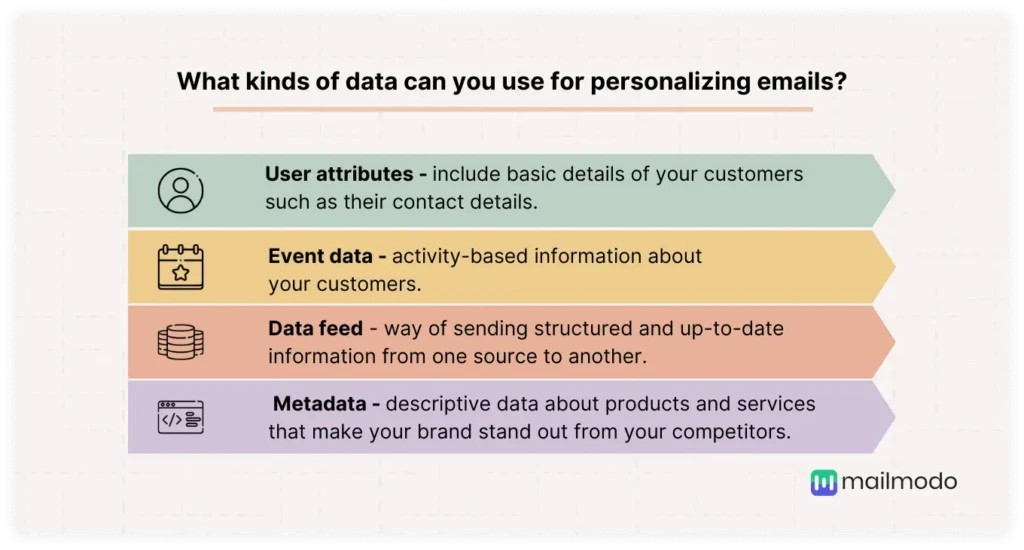
You can tailor your email content to match your subscribers' preferences, behaviors, and previous interactions. For example, segment your list based on purchase history or engagement levels, and send targeted offers or content that resonates with each segment.
When subscribers find your emails valuable, they’re far less likely to mark them as spam.
When subscribers find your emails valuable, they’re far less likely to mark them as spam.
10. Use Email Spam Checkers
If you are worried about your emails looking like spam, there are tools such as SpamAssassin, PostMaster, Mail-Tester, etc that can help you gauge their likelihood of being flagged.
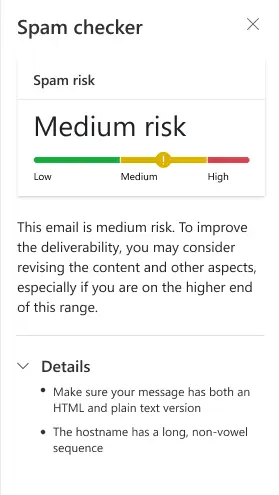
These tools analyze various elements like subject lines, content, HTML formatting, etc to identify potential issues. While ISPs ultimately decide which emails land in the inbox or spam folder, using these tools can help you fine-tune your emails and reduce the risk of complaints.
Maintaining a Low Spam Complaint Rate: Below 0.1%
To keep your spam complaint rate below 0.1%, focus on delivering valuable, relevant content to engaged subscribers while adhering to best practices in email design and compliance.
Regularly clean your list, use clear branding, and avoid spammy tactics to ensure your emails are welcomed, not flagged. Most importantly make sure you have a reliable email list to start with, and not just a long list with low-intent subscribers on it.
Regularly clean your list, use clear branding, and avoid spammy tactics to ensure your emails are welcomed, not flagged. Most importantly make sure you have a reliable email list to start with, and not just a long list with low-intent subscribers on it.
Recent Posts
16 Dec 2025
What Is Free Trial Abuse in SaaS & How to Stop It
Learn what free trial abuse is, its types, how it impacts your SaaS and ways to prevent it. Discover ...
27 Nov 2025
Clearout Recognized In Forbes India DGEMS Select 200 | 2025
Clearout featured in Forbes India DGEMS Select 200 (2025 Cohort) for its innovative & scalable solut ...
21 Nov 2025
9 Hidden Bot Patterns Behind Modern Form Attacks
Wondering how bots still slip through your forms? Explore 9 hidden bot patterns behind modern form a ...
19 Nov 2025
10 Proven CRM Migration Best Practices for 2026
Explore the best practices of CRM migration in 2026 and learn how to audit data, map fields, cleanse ...
19 Nov 2025
How Syntax, Domain, and SMTP Email Validation Checks Work
Explore how syntax, domain, and SMTP email validation checks work and how they help identify formatt ...
Clearout's
Form Guard
Validate email, phone & name on any forms!
- Real signups only
- Verified emails
- Valid phone numbers
- No fake names
- Cleaner CRM
- No devs needed
Email Verification, Email Finding Form Guard & Prospecting Service
Expand Your Reach By Finding & Verifying Ideal Prospects.

